I spent a day in Wimbledon, and the London neighborhood was even fancier than the tennis tournament
Armani Syed

- I visited Wimbledon, the London neighborhood where the British tennis tournament takes place.
- The area consisted of giant houses and luxury stores, and it was the perfect spot for afternoon tea.
I spent a day in Wimbledon, the southwest London neighborhood that hosts the annual tennis championships, to see what the area was really like.
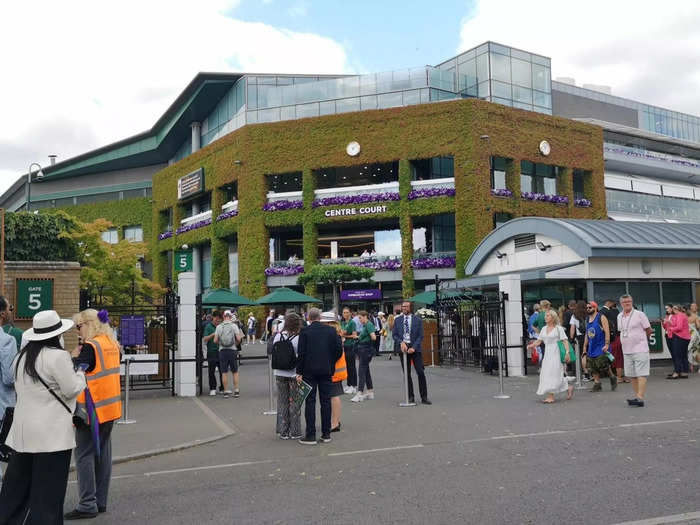
As a person living in London, it's impossible to escape the buzz of the Wimbledon tennis championships. While I only have a mild enjoyment of tennis at best, which is directly correlated to when the iconic Williams sisters are playing, I have always been fascinated by the lifestyle the British sporting event invokes.
The 2022 tennis tournament, which began on June 20 and will run until Sunday, marks 100 Years of Centre Court, according to Vogue. I thought this anniversary was the perfect time to visit the area to see how it's shaped by the famous championships.
I also wanted to know what the neighborhood behind the tournament is like, away from the pristine white outfits and artificial grass.
The Championships, Wimbledon, is an annual tennis tournament that takes place in the affluent residential neighborhood of the same name, located in the London Borough of Merton.
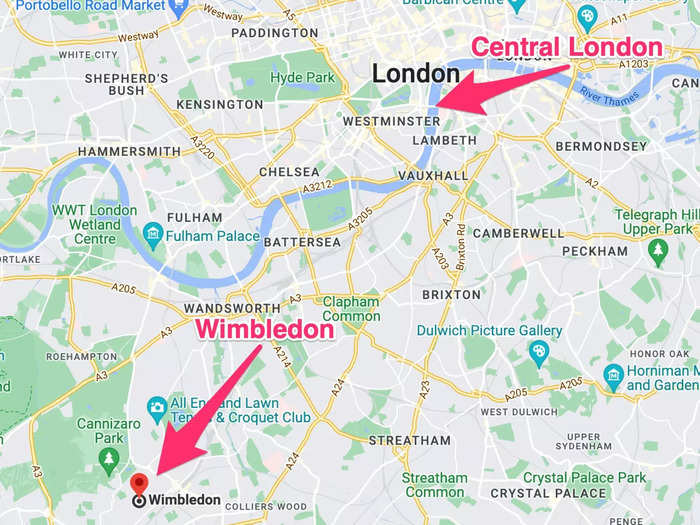
Wimbledon is a suburban neighborhood on the outskirts of southwest London, in the London Borough of Merton. It can be accessed by train or by taking the underground to the very end of the District line, according to Transport for London.
I traveled on a quick train from London Waterloo to Wimbledon, and as soon as I exited the station it was clear the neighborhood was smitten with its sport.

I boarded a 16-minute South Western Railway train from London Waterloo and quickly arrived at Wimbledon station, which can also be accessed by London Underground services.
As soon as I stepped out of the station, I was met with an overwhelming display of Wimbledon branding. I had been there no longer than two minutes before an eager employee came over to recommend a route to the tournament, which is located at Wimbledon Park, a 27-minute walk away from the station.
Curious to see the route and space, I took a short bus ride to the Centre Courts in Wimbledon Park.
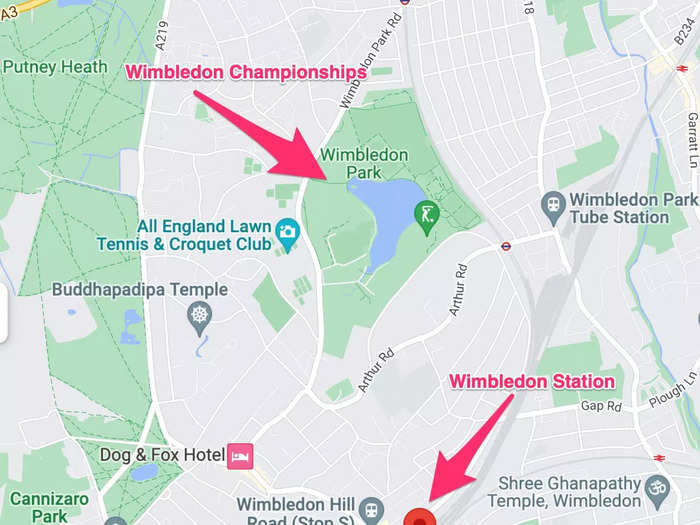
I rode the bus for a few stops to get closer to the championship grounds. The event seemed well organized and the transport was surprisingly efficient.
As any Londoner will know, transport in London can be pretty chaotic, subject to delays, overcrowding during major events, and cancelations — this Wimbledon fantasy felt like a world away from everyday London.
Shops, cafes, and other local businesses had also incorporated Wimbledon branding, tennis balls, and rackets into their shop windows, which created a sense of togetherness.

During the journey, it was clear that local businesses were making full use of the added footfall and most had filled their window displays with tennis balls, rackets, and flowers.
Wimbledon village had a number of independent brunch spots, expensive London-based food chains, and homeware stores like Farrow and Ball as well as Le Creuset.
The quaint storefronts were often pastel-colored and sold luxury products. This confirmed my suspicions that Wimbledon is still fancy away from the courts.
The closer we got to the Centre Court, the more I started to see people dressed in their afternoon best to attend the event.

According to the Evening Standard, there is no official dress code for the event but smart dress is encouraged.
As soon as the Centre Court entrance became visible, I suddenly saw people in summery dresses, blazers, linen pants, and Panama hats. I felt slightly out of place in my torn jeans and gimmicky Adidas tennis T-shirt.
For those hoping to secure a ticket on the day, they can join the queue as early as the night before.

So iconic is the Wimbledon queue that it has its own marking on Google Maps. I navigated my way to the space, which the Wimbledon guide notes is for buying limited Show Court tickets available on the day or a Grounds ticket, which gives access to unreserved seating in certain courts.
By the time I arrived the queue had died down but as Insider's Barnaby Lane previously reported, the queue is a social activity itself, where those who love tennis can socialize and even camp overnight to secure the best same-day tickets.
Along the queuing space, there were fun games, photo opportunities, and drinks spots.
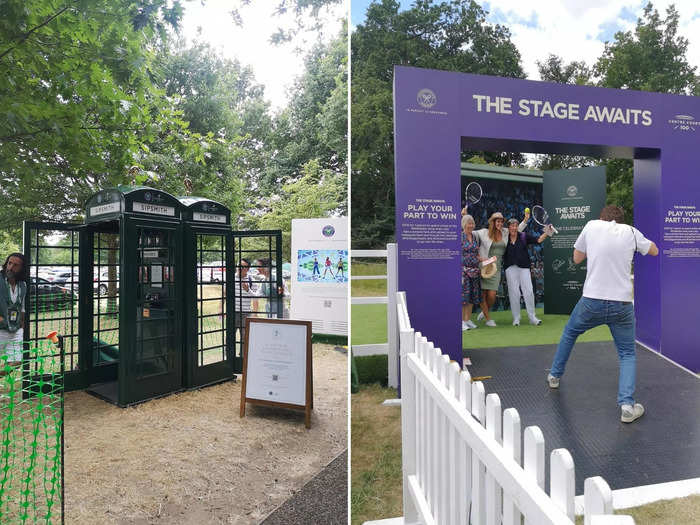
I was approached by a worker who said that if I posted a photo of myself on Instagram in front of the Centre Court backdrop with a racket and tennis balls in my best victory pose, I'd be entered into a draw for £100, or around $120.
I decided against it, but I was impressed by the green telephone booths I saw people waiting outside.
A sign noted that if you answered the phone when it rings you could win prizes. This was a fun touch to the queue and reminded me that I was, in fact, in London. This, along with the drinking spots, made my Belgian friend remark that it felt like "the Disney World of tennis."
Walking the streets felt like I had left London because the houses were so large and often gated.
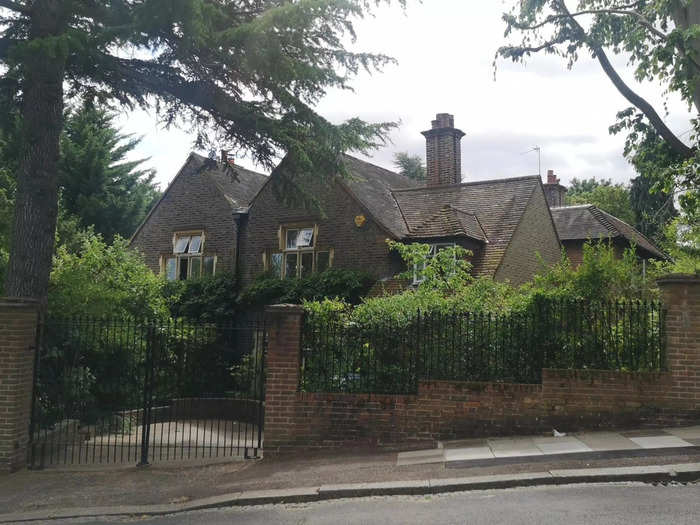
As you get further out from the center of London, houses typically get bigger and more spaced out but these Wimbledon homes felt like they weren't in the capital city at all.
I walked around seeing beautiful gated properties that I could only dream of owning in London. Having previously spent time in other less affluent parts of the London Borough of Merton, I know that this luxury does not extend to other pockets of the area.
According to Rightmove, Wimbledon has an overall average house price of £929,659, or over $1.1 million, while the neighboring area of Morden has half the overall average price of Wimbledon, at £463,374, or around $557,000. Wimbledon has been home to wealthy residents for decades and this directly shapes the community.
Mansion Global reported that the homes on the parkside view of the common cost an average of £10 million, or around $13 million, and have come to be known as Wimbledon's millionaires' row.
Away from the championships, I was surprised to learn that Wimbledon was home to the UK's first Thai Buddhist temple.
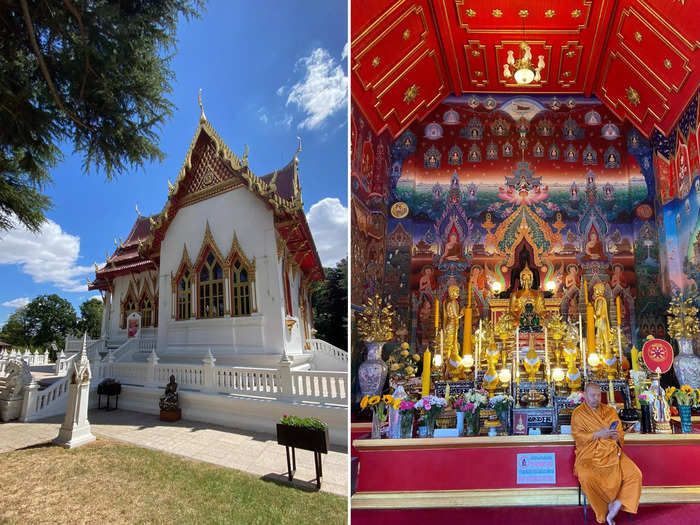
My previous experience of Wimbledon was that it's a suburb that doesn't appear to have as diverse a population as other parts of Merton. With this in mind, I was surprised to come across Buddhapadipa Temple.
As the UK's first Thai Buddhist temple, which relocated to the area in 1976, according to the area's website, it invited a lot of children on school trips. On arrival, I took my shoes off and entered the temple to see brightly-colored murals painted on the wall and a monk scrolling on his iPhone.
The town had a number of independent coffee shops, so next up, I had an iced coffee in a stunning local cafe.
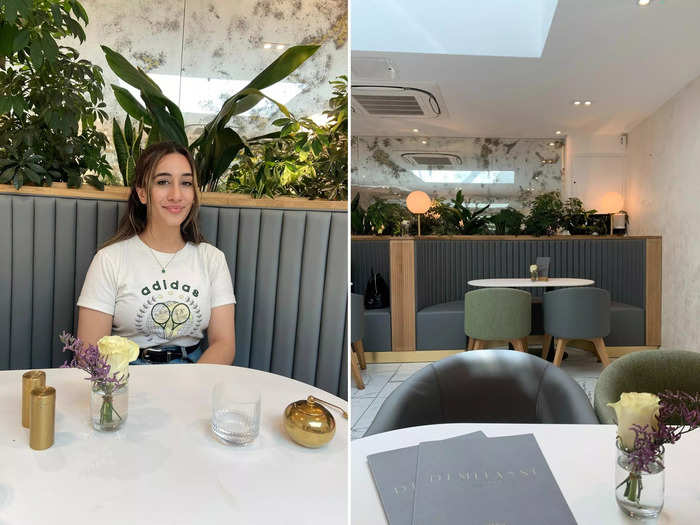
From its vibrant lights to its tasteful interiors, it was clear to me that Demitasse appealed to Wimbledon's wealthier residents. I only ordered an iced latte for £3.70, or around $4.40, as I was saving myself for a cream tea later.
I can often tell if a London cafe is fancier based on its refusal to sell coffee syrups, but despite having to drink coffee as it should be tasted without the syrup, the cafe was a relaxing environment.
After a short wait, I was able to get a table for a cream tea at The Ivy Cafe, an upmarket London chain that the Queen has dined at.
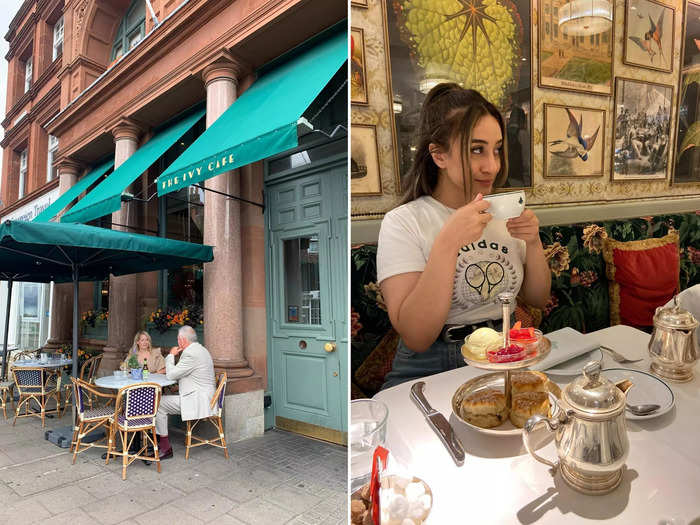
The Ivy is a cafe and restaurant chain that began in London in 1917, according to its website. According to Harper's Bazaar, even the Queen enjoys visiting the art-deco establishment. Other guests at the celebrity hotspot have included Nicole Kidman, Jack Nicholson, and Brad Pitt, The Guardian reported.
The Ivy has become synonymous with luxury dining over the years due to its stunning interiors. The staff also wear smart tailored uniforms to add to the atmosphere. It suited Wimbledon perfectly in my opinion.
I stepped in to ask for a table and, after a short wait, I was having a typically British cream tea consisting of a pot of breakfast tea and a jam and cream scone. I paid £8.75, or around $10.50, which I found to be surprisingly reasonable for London. It costs upwards of £70, or around $84, to have a full afternoon tea at Fortnum and Mason, a luxury British food establishment.
To recover from my sugar high, I headed for a walk in Wimbledon Common and found an unexpected yet historic windmill.
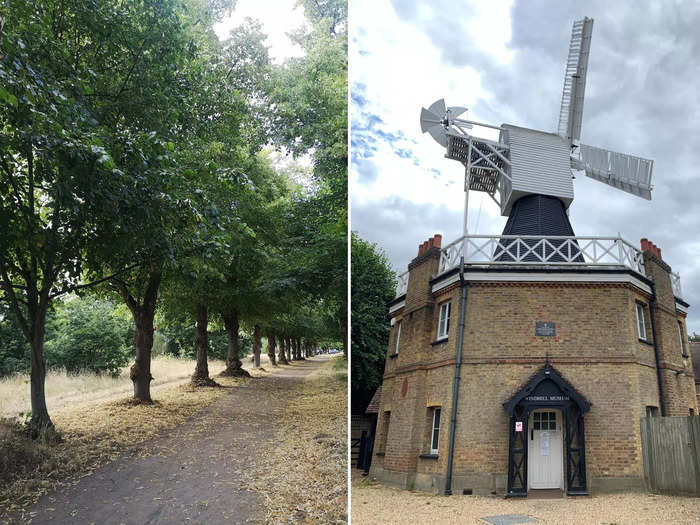
From The Ivy Cafe, which is located in the center of the village, I walked for around 15 minutes before reaching Wimbledon Common. While most areas in London have a park or common, this felt like a family-orientated space with older couples walking their dogs or taking their children out.
In the center of the common, I found an out-of-use windmill that was erected in the 19th century to serve the community who wanted to have their own mill for local use, according to the windmill's website. The page adds that the large structure stopped working in 1864.
I was struck by how many unique features there are in Wimbledon that I had never heard of before.
Over the years, Wimbledon has also become synonymous with the fictional characters Lara Croft and The Wombles.
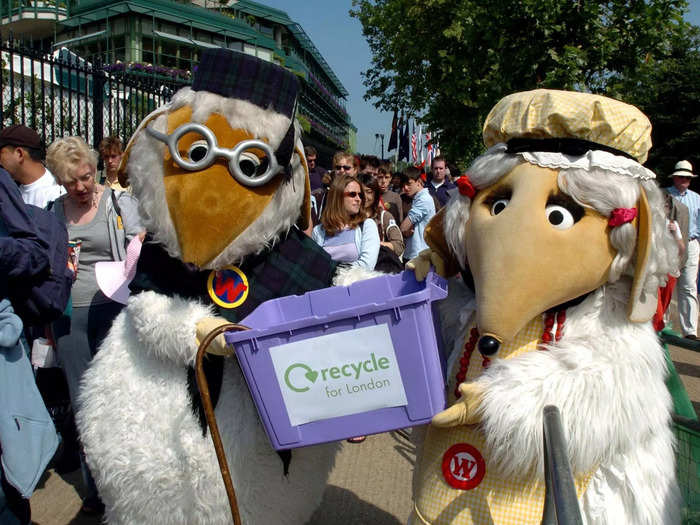
Wimbledon is a part of London that has had quirky cultural relevance outside of its sporting reputation. According to the Wimbledon Guardian, a local newspaper, Lara Croft, the archaeologist main character of the video game franchise "Tomb Raider," was supposedly from Wimbledon and attended Wimbledon High School.
In 2020, Wimbledon train station revealed a mural nodding to the stars of the 1973 children's TV show "The Wombles," eco-conscious creatures that featured in Elisabeth Beresford's children's books as early as 1968, South West Londoner reported. I left with an understanding that Wimbledon has a very niche history that it seems to be very proud of.
While I enjoyed my time in Wimbledon, in my opinion the neighborhood didn't feel like part of London because of how fancy it was.
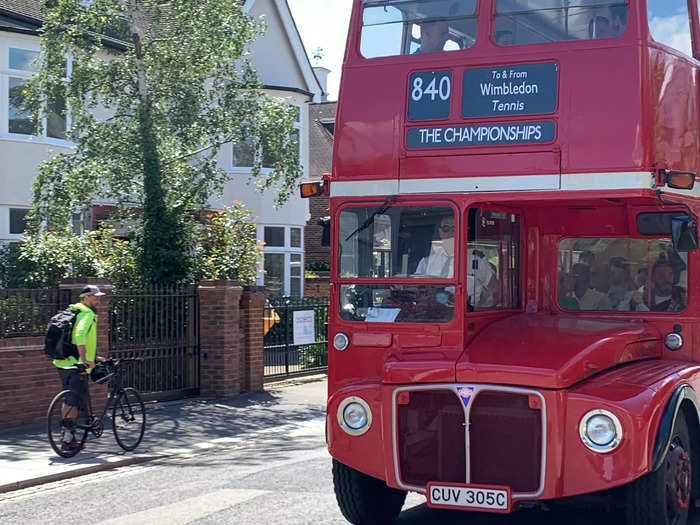
I enjoyed my time in Wimbledon but it seemed like a space for a very particular type of person thanks to its luxury stores and restaurants, and therefore felt quite insular compared to other more eclectic London neighborhoods.
The streets were clean, the shops were selling an expensive lifestyle, and the visitors were enjoying this dream world that lies just kilometers away from more racially and economically diverse parts of London such as Brixton, Tooting, and Kingston.
READ MORE ARTICLES ON
Popular Right Now
Popular Keywords
Advertisement